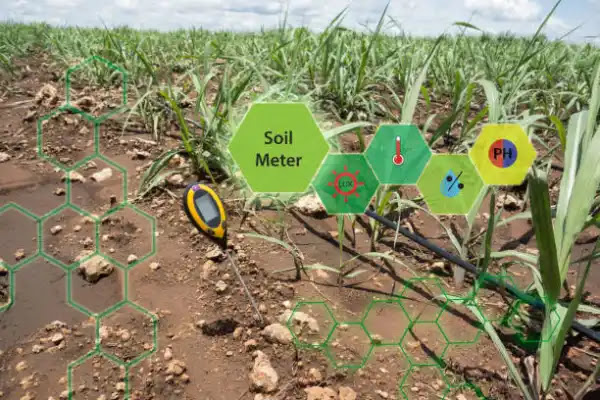Featured
- Get link
- X
- Other Apps
Enhancing Biodiversity Conservation in Agriculture
Trickle Irrigation: Agriculture
Introduction
Biodiversity conservation is essential for maintaining
ecosystem health, resilience, and productivity in agricultural landscapes.
Trickle irrigation, also known as drip irrigation, plays a crucial role in
promoting biodiversity conservation by supporting diverse plant communities,
providing habitat for wildlife, and minimizing environmental impacts associated
with water use in agriculture. This article explores the synergies between
trickle irrigation and biodiversity conservation, highlighting how drip systems
can contribute to sustainable agriculture practices that prioritize
biodiversity protection and ecosystem services.
The Importance of Biodiversity Conservation in Agriculture
Biodiversity conservation in agriculture offers numerous
benefits:
- Ecosystem
Services: Biodiverse agricultural landscapes provide a range of ecosystem
services, including pollination, pest control, soil fertility, and water
purification, which are essential for sustainable food production and
ecosystem resilience.
- Resilience
to Climate Change: Biodiverse agricultural systems are more resilient to
climate change impacts, such as extreme weather events, pests, and
diseases, as diverse plant communities can adapt and respond to changing
environmental conditions.
- Genetic
Diversity: Biodiversity in agriculture supports genetic diversity within
crop and livestock populations, which is crucial for breeding programs,
disease resistance, and adaptation to environmental stressors.
- Cultural
and Socio-economic Benefits: Biodiverse agricultural landscapes support
cultural traditions, livelihoods, and food security for millions of people
worldwide, particularly in rural and indigenous communities dependent on
agriculture for their sustenance and well-being.
Benefits of Trickle Irrigation for Biodiversity Conservation
Trickle irrigation offers several benefits for promoting
biodiversity conservation in agriculture:
- Water
Efficiency: Trickle irrigation is highly water-efficient, delivering water
directly to the root zone of plants with minimal losses due to evaporation
or runoff. By optimizing water use efficiency, drip systems reduce the
need for water extraction from natural habitats, such as rivers, lakes,
and aquifers, thereby minimizing habitat degradation and preserving water
resources for biodiversity conservation.
- Habitat
Creation: Trickle irrigation systems create microhabitats for plants and
soil organisms, supporting diverse plant communities and enhancing soil
biodiversity. By providing consistent moisture levels and promoting root
growth, drip systems create favorable conditions for plant establishment,
which, in turn, attract pollinators, beneficial insects, and other
wildlife to agricultural landscapes.
- Reduced
Chemical Use: Trickle irrigation minimizes the need for chemical inputs,
such as fertilizers and pesticides, by delivering water and nutrients
directly to plant roots, reducing leaching and runoff of agrochemicals
into surrounding ecosystems. By reducing chemical inputs, drip systems
mitigate the negative impacts of agricultural practices on biodiversity
and ecosystem health, promoting ecological balance and resilience in
agricultural landscapes.
- Soil
Health: Trickle irrigation promotes soil health by maintaining optimal
moisture levels, reducing erosion, and enhancing soil structure and fertility.
Healthy soils support diverse microbial communities, which play critical
roles in nutrient cycling, carbon sequestration, and soil ecosystem
functions essential for biodiversity conservation and ecosystem
resilience.
Implementation Considerations for Trickle Irrigation and
Biodiversity Conservation
Effective implementation of trickle irrigation for
biodiversity conservation requires careful planning and consideration of
various factors:
- Plant
Selection: Select appropriate plant species for drip irrigation based on
their ecological requirements, suitability for the site conditions, and
potential to support biodiversity. Native and adapted plant species are
often preferred for their ability to thrive in local environments and
provide habitat and food for wildlife.
- Habitat
Enhancement: Incorporate habitat enhancement measures, such as planting
hedgerows, cover crops, or wildflower strips, into agricultural landscapes
to provide additional habitat for wildlife and promote biodiversity
conservation. These habitat features can be integrated with drip
irrigation systems to create ecological corridors, nesting sites, and
foraging areas for birds, insects, and other wildlife.
- Integrated
Pest Management: Implement integrated pest management (IPM) practices to minimize
pesticide use and promote natural pest control mechanisms, such as
biological control agents, crop rotation, and habitat manipulation.
Trickle irrigation can be used in conjunction with IPM strategies to
reduce pest pressure and support beneficial insect populations, thereby
enhancing biodiversity and ecosystem services in agricultural landscapes.
- Monitoring
and Evaluation: Implement a monitoring and evaluation program to assess
the impact of trickle irrigation on biodiversity conservation and ecosystem
health. Monitor plant and wildlife populations, soil biodiversity, water
quality, and ecosystem functions to track changes over time and identify
opportunities for improvement or adaptive management.
Case Studies and Success Stories
Several case studies and success stories demonstrate the
effectiveness of trickle irrigation for promoting biodiversity conservation in
agriculture:
- Agroforestry
Systems: In agroforestry systems combining trees, shrubs, and crops,
researchers have successfully used trickle irrigation to support diverse
plant communities, enhance soil fertility, and provide habitat for
wildlife. These multifunctional landscapes promote biodiversity
conservation while also improving soil health, water management, and
carbon sequestration.
- Pollinator
Habitat Restoration: In agricultural areas experiencing pollinator
declines, farmers have implemented drip irrigation systems in conjunction
with habitat restoration measures to create pollinator-friendly habitats.
These initiatives support native pollinator populations, enhance crop
pollination, and promote biodiversity conservation while also improving
agricultural productivity and resilience.
- Riparian
Restoration: Along riparian zones and watercourses, farmers and land
managers have utilized trickle irrigation to restore riparian vegetation,
stabilize streambanks, and enhance aquatic habitat for fish and wildlife.
These riparian restoration projects promote biodiversity conservation,
improve water quality, and enhance ecosystem connectivity in agricultural landscapes.
Conclusion
Trickle irrigation plays a crucial role in promoting
biodiversity conservation in agriculture by supporting diverse plant
communities, enhancing habitat quality, and minimizing environmental impacts
associated with water use. By optimizing water use efficiency, reducing
chemical inputs, and enhancing soil health, drip systems contribute to
sustainable agricultural practices that prioritize biodiversity protection and
ecosystem services. With strategic planning, implementation, and monitoring,
trickle irrigation can be a valuable tool for enhancing biodiversity
conservation and promoting ecosystem resilience in agricultural landscapes.
- Get link
- X
- Other Apps
Popular Posts
Air Filter Created That Can Kill the Coronavirus – 99.8% Effective on SARS-CoV-2
- Get link
- X
- Other Apps


